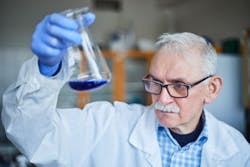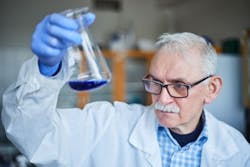Better Wastewater Treatment Beckons
Biosorption-based technology promises a more-efficient and less-expensive option fortertiary treatment of wastewater than methods currently on the market, believe researchers at the Kaunas University of Technology (KTU), Kaunas, Lithuania. Their process already is starting to find use in industry.
Figure 1. Viktoras Račys leads a group that has developed the tertiary treatment technology. Source: KTU.
The announcement comes after a decade of work at KTU, with original funding of €470,000 (about $555,000) over three years provided by the Eureka research program of the European Union (EU) in 2008.
As the main partner in the research, KTU’s work focused on the final stage of wastewater cleaning, which typically involved complex processes requiring a combination of bioreactor, chemical coagulation, granulated activated carbon or sorption technologies.
“The cost of tertiary treatment is a big problem. We set out to find a stable process which was as cheap as possible. We developed the treatment using three processes in one piece of equipment — a reactor. We use sorption, biodegradation and filtration. The pollutants are degraded by the microorganisms within the reactor,” he says.
One early adopter was Lithuanian oil transfer company Klaipėdos Nafta (KN), which installed the technology in 2012 with KTU carrying on technical supervision since then. The company is using the technology to clean all the wastewater it generates at the port of Klaipedos, which lies in an environmentally sensitive area called the Curonian Lagoon, together with bilge water from ships there. Clean water then is discharged into the lagoon.
KN’s biosorber is a 400-m3 vessel filled with activated carbon, biologically active sludge, highly dispersive diffusers and air distribution system, wastewater feed and treated-water draining system, as well as a biosorber washing system.
The system processes 160 m3/hr of wastewater at a cost only 1/10th to 1/20th of that of other technologies, reports Račys, who adds the treatment reduces the level of pollution in the water to 0.1g/Lfrom 1g/L. “This surpasses the EU standards and the water can be put straight back into the sea.”
Račys believes the system could treat any biologically decomposable chemical waste stream. However, this will require individual research and pilot investigations beforehand, he cautions.

